November 13th, 2013
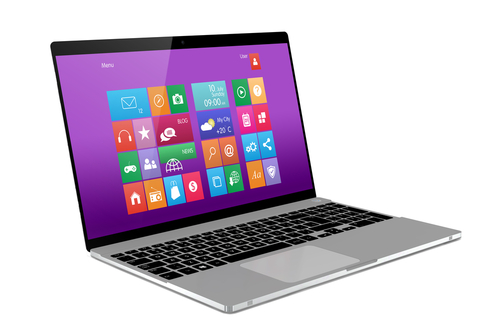
Microsoft’s latest operating system, Windows 8, has some great features, but there’s room for improvement. As Preston Gralla of Computer World writes, Windows offers some built-in tools for boosting performance if you know where to look. The first step is to unhide them.
To do so, press the Windows key and ‘I’ to bring up the settings. Click on “Tiles” and change “Show Administrator Tools” to ‘Yes’. This gives you access to some of Windows more complex, powerful performance tools, but also opens the door to disrupting your system. If you’re a novice user, it’s probably best to leave this to a professional. Even if you are more advanced, it’s a good idea to go back and hide Administrator Tools after finishing the work outlined here.
This tool has been available since Windows Vista and lets users see what applications are using the most resources. By typing “resmon” at the Start screen, the Resource Monitor icon will appear. Once opened, you’ll see a list of all of the apps and services currently running and a graph of your computer’s used resources. With this information, you can make informed decisions about which applications can be closed to improve performance. You may also decide that a replacement is needed for a particularly taxing program.
Also available since Vista, the Reliability Monitor is for tracking system stability and monitoring crashes. Access it by typing “reliability” at the Start screen, then click ‘Settings’, then ‘View Reliability History’. You’ll see a graph of your system’s stability with a rating between 1 and 10. Each time there’s a application or system failure, the rating drops. Every day there’s no crashes, the rating improves. In addition to this simple rating system, you’ll be given a list of all of the failures your system has experienced. You’ll be able to read details of each. By studying this report, you’ll be able to see where fixes and changes are needed.
For many users, their system starts slowly because they’re asking too many programs to load automatically on start-up. To thin this list, use the Task Manager. There are many ways to access it in Windows 8, but perhaps the easiest is the classic ‘control-alt-delete’. Click the start-up tab once in Task Manager, which you may need to click “More details” to see. This tab shows you what programs are asked to launch upon start-up. You’ll also see an impact rating, which judges how much each application slows start-up time and how much disk space it takes to load. Use this information to only load programs you constantly use and don’t greatly impact start time.
Even though it should be enabled by default, it’s also a good idea to check that you’re using Fast Startup. Rather than closing all sessions when you shut down your computer, Fast Startup saves your Windows kernel session to disk, which is called hibernating. This session is loaded when you start-up again to cut the time it takes to restart. To check if you’re using Fast Startup, type “Power” at the Start screen, then click ‘Settings’ and ‘Power Options’. From there, click ‘Choose what power buttons do’ and the Fast Startup option will be under ‘Shutdown Settings’.
The Task Manager itself is also a powerful tool in Windows 8. It contains tabs to track each user, the performance of your CPU, Memory, Wi-Fi and more and to track the history and usage of applications. Again, using these tools incorrectly can have a negative impact on your system so be careful what you click.
For help getting the most out of your computer, or to fix a device that isn’t working correctly, call Geek Rescue at 918-369-4335.
November 11th, 2013
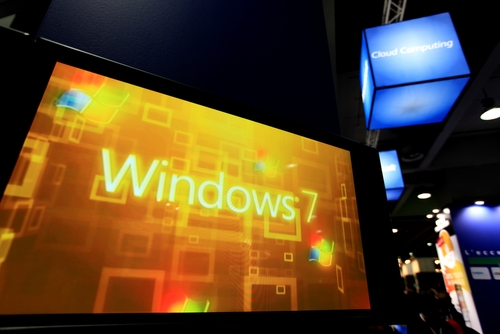
A zero-day exploit that affects Internet Explorer, Windows XP and Windows 7 users won’t be getting a patch from Microsoft any time soon. Microsoft’s Patch Tuesday for November is only a day away and, as Paul Ducklin of Naked Security reports, news is already spreading that a patch for this exploit won’t be included.
The “remote code execution vulnerability” is dubbed a zero-day because hackers were the first to discover it. Rather than security experts, or Microsoft themselves, discovering the vulnerability and patching it, cyber criminals have been able to launch attacks in the wild before any precautions could be taken.
The attacks seen so far that exploit the vulnerability use .TIFF image files that contain malware. When a user opens the seemingly innocent image file, malware infects the machine, but no warning or notice is given. This silent infection allows hackers to remain undetected while they claim access to files and control a computer remotely.
So far, most of the attacks stem from email attachments. The .TIFF is hidden in a Word document and automatically loaded when the document is opened. There are a number of other ways the exploit could be attacked, however. Inserting the infected image file directly into the body of an email could infect your system through only a preview of the message. Hackers could also set-up websites specifically to infect visitors, or insert malware into existing sites using .TIFF images.
While there’s no patch coming from Microsoft this week, there are ways to protect yourself. A Fix it tool released by Microsoft will tell your computer to stop processing .TIFF files. This is a broad stroke, but one that will ensure the vulnerability will be closed until a more permanent patch is made available.
In the meantime, some simple advice will also help improve your security. You should always be wary of unsolicited emails and their attachments. Often, all it takes is opening the email to try to verify its authenticity is all it takes to become a victim. Also, make sure you have an antivirus program in place and it’s updated. Because of the way this exploit gives a hacker access to all of the files you’re current user account is able to access, it’s useful to use a non-administrator account. That way, if you are attacked, only part of your system is at risk, and solving the problem from an administrator account is much easier.
If any of your devices are infected with malware, bring them to Geek Rescue or call us at 918-369-4335. We’ll find the problem, fix it and help you protect yourself from future attacks.
October 30th, 2013
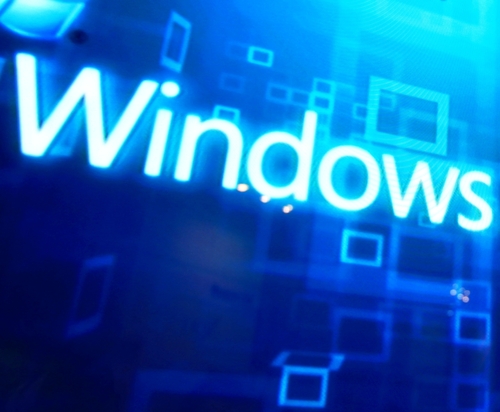
The Windows XP operating system was initially released in 2001. More than twelve years later, it still accounts for about a fifth of the operating systems in use on machines. This wouldn’t necessarily pose a problem, except that, as Kelly Jackson Higgins reports for Dark Reading, XP users are at a much greater risk of malware infections and Microsoft is cutting off support on April 8th, 2014.
While Windows 8 users and XP users encountered about the same amount of malware in the first half of 2013, XP machines were about six times more likely to be infected by attacks. Because the OS is so old, hackers have had more than a decade to develop malware for it and find security vulnerabilities. This means that malware attacks are likely to be highly effective because they specifically target known flaws. It’s also likely that users still using XP have not kept it updated properly. Many are likely behind on security patches and may not be running the latest antivirus programs either.
Security experts chalk up the high number of users stuck on XP to its familiarity. While Windows 7 and 8 have focused on better functionality, they’re also quite a bit different from XP. Instead of learning the ins and outs of a new OS, many users choose instead to stick with what’s comfortable.
So, what are these XP users risking? There are 3 types of malware that target these users the most. All are fast spreading worms that infect computers then spread to others.
- Sality- Steals personal information, changes security settings on infected machine
- Ramnit- infects Windows executable files, Office files and HTML files
- Vobfus- downloads other malware and spread with a USB flash drive
On April 8th, Microsoft won’t completely end support for Windows XP. But users will have to pay for a premium service for critical updates.
Geek Rescue cleans malware infections and fixes all of your devices. Bring your device by one of our locations or call us at 918-369-4335. If it boots up or turns on, we fix it.
September 24th, 2013

Microsoft Windows users may be tempted to forego any additional security software because of the existence of Windows Defender, a free antivirus program included with Windows. While Defender does offer some security benefits, Mathew J. Schwartz, of Information Week, points out that it hardly is capable of protecting your computer on its own.
In a study conducted with 27 other antivirus programs that tested protection, repair and usability of each, Defender scored the lowest. In fact, out of a possible score of 18 on the test, Defender scored about 5 points lower than any other program.
In a test of about 60-thousand common pieces of malware, Defender was able to detect 97-percent of them. Not so good considering only three other programs failed to achieve 100-percent detection.
Defender does have its advantages, however. It earned top marks in usability and, of course, its price tag can’t be beat.
So, should you run Windows Defender on your computer? Absolutely, but you should have other security in place, as well.
Security experts suggest using multiple layers of security, even if you have the top ranked programs in place. Because malware is constantly changing and new forms are released each day, there’s no way any program can keep up. So, having multiple ways to detect malicious programs gives you a better chance to avoid infection.
For help improving the security on your machine, or to get rid of malware that’s already infected it, call Geek Rescue at 918-369-4335.
September 9th, 2013
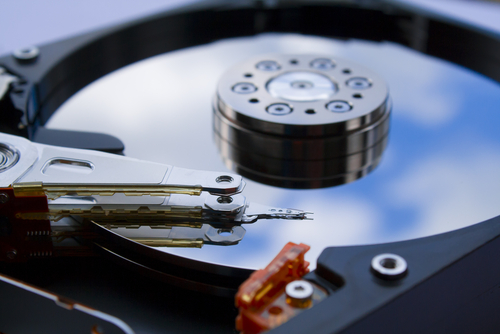
If there’s a clicking noise coming from your computer or you encounter a number of freezes, there’s probably a problem with your hard drive. Most manufacturers claim their hard drives last for more than 1-million hours of use, but the failure rate of a drive is about 3 to 5 times higher than that.
A recent post on Techopedia has some tips for how anyone can attempt to fix their hard drive. Before opening up your machine, check your warranties. Many times, trying to fix your own computer will void your warranty, which leaves you no safety net if you aren’t successful.
There are paid services and free services to back-up the data on your hard drive. The important thing is to make sure you have a back-up in case your drive completely fails. This is good advice whether your hard drive is acting up or not.
More recent versions of Windows is actually capable of fixing some of the minor errors on your hard drive. Right click the your hard drive in the “My Computer” menu, go to “Properties”, then “Tools” and select “Check Now”.
If the “Check Now” tool crashes, there’s a serious problem with your hard drive. Even if it runs successfully, it may tell you you’re due for a replacement. Before replacing it, however, deactivate software like Office 365. This way, you can restore from back-up on your new hard drive.
There are programs available that will clone your hard drive, which then allows you to put the cloned drive onto a new, healthy hard drive. This way, you won’t be starting from scratch and you’ll be sure all your data and programs are already in place. If the errors on your old hard drive are from viruses, however, you’ll just be infecting the new drive as well. So use caution with this option.
Your hard drive is arguably the most important piece of your computer. If it isn’t working properly, your entire computer can be virtually useless. While there are some easy fixes for common problems, some issues are best left to the professionals.
If your computer isn’t working properly, bring it to Geek Rescue. Our staff will diagnose and fix the problem quickly and efficiently. We work on a variety of devices so if it boots up or turns on, we fix it. Come by or call us at 918-369-4335.
September 4th, 2013

If you own a computer, or any device really, you’re likely to encounter problems from time to time. But, as Ben Kim of CIO points out, some of the more common problems have easy fixes that you can handle yourself.
Regardless of the problem and before you try anything else, restart your computer. There’s a reason this is cliched advice. For many issues, a restart will put everything right.
Your system will slow down when your hard drive gets too full. If you’ve noticed a sluggish performance, try clearing some space. Windows users will also want to use Microsoft’s System Configuration tool to trim down the number of applications that open automatically on start-up. To access it, press Windows-R, type “msconfig” and hit Enter.
If your downloads are taking longer than they should, test your connection speed. You can do this on a number of websites. Resetting your modem and router is also a good idea before contacting your Internet Service Provider.
If you’re seeing a high number of pop-ups ads, you’ll want to make sure you have a pop-up blocker enabled in your browser. If they appear when you aren’t even surfing the internet, you’ve got adware. This usually stems from you installing a program that had adware hidden in it. To remove it, try running any security software you may have, or installing new adware-specific programs.
If you’re sitting in range of your wireless router, but you still get a weak signal or constant disconnects, there are a couple of fixes. First, try resetting the modem and router. Then, let Windows troubleshoot the problem for you by right-clicking on the Wi-Fi icon in the taskbar and selecting ‘Diagnose Problem” or “Troubleshoot Problems”.
We’ve all had our share of printer-related headaches. Check to make sure there’s enough ink, toner and paper and the notification light isn’t blinking. Turn the printer off, then back on. You can even completely unplug the power supply and wait a few seconds before plugging it back in. If you still can’t print, check to see if the “Use Printer Offline” option is enabled. Windows will switch this automatically in some circumstances so make sure to uncheck it.
If these fixes don’t work or you have a more serious issue, call Geek Rescue at 918-369-4335. Our team of techs fix any problem your device may have. Give us a call, or bring your device to one of our convenient locations.
August 30th, 2013

Windows 8 offers users a unique password option when users sign in. Rather than a text password, users are able to use an image from the Pictures folder to keep their PC secure. Although this is an interesting idea that personalizes a user’s device, it is proving to fail in the security department.
As Thomas Claburn reports for Information Week, a group of researchers created a method for breaking the Windows 8 picture passwords. Their model was successful in hacking a password 48-percent of the time during one test.
To set a picture password, users choose an image, then draw circles, lines or tap different places on the image. When they log-in, they just need to take the same actions in the same order. It’s similar to smartphones that lock with a pattern, rather than a pass code.
Windows 8 does take some precautions to make this method more secure. Most notably, a user is limited to 5 log-in attempts. After a fifth failed attempt, the device is locked down. This means hackers can’t launch a purely automated attack, or brute force attack, that tries every combination possible. During testing, a purely automated attack was only successful about 1-percent of the time.
That is still a significant number of users at risk, and researchers suggested that a higher success rate is likely with a little training. Beyond the technical capabilities of picture passwords, what makes them insecure is how most people use them. When manipulating an image, most people will circle, or tap the eyes and draw a line on the mouth. These tendencies make it much easier for a password to be hacked.
What’s lacking from picture passwords is a strength meter. When you make a password for an online account, most sites will tell you if the password is strong, weak or unacceptable. Windows 8 included no such meter for picture passwords.
Since this is a new log-in method for most people, users won’t know what a strong picture password consists of. A password meter could help ensure that users have a password strong enough to hold up to a hacking attempt.
To keep your machine more secure, contact Geek Rescue at 918-369-4335. We have a variety of security solutions to keep you safe.
August 14th, 2013
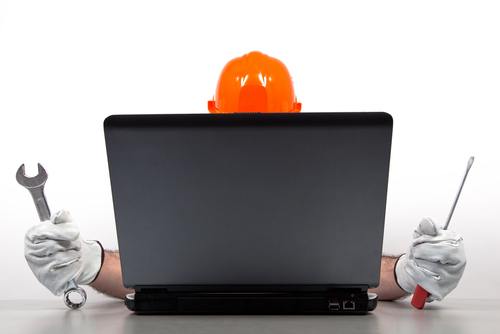
When your computer is infected with malware, it is usually easy to spot. It may not be that easy to fix.
Malware makes your computer do some strange things. It will seem to working hard at some task even when you’re not doing anything. Windows will open seemingly by themselves. The effects of malware on your system are generally not clandestine.
Once you’ve diagnosed a malware infection, what’s your next step? Matt Egan has some good ideas at PC Advisor.
The malware infecting your computer may use your internet connection against you, so disable that immediately. Unplug any wired connections and turn off your WiFi connection.
Next, assuming you’re using a Windows operating system, boot into Safe Mode. When restarting your machine, hit F8 to use Safe Mode.
This allows you to work freely without doing any more damage to your PC. Safe Mode doesn’t enable many of Windows processes and programs to run and, more importantly, malware doesn’t run either.
While in Safe Mode, you’ll want to scan for malware. If you already have antivirus software installed, that’s great but you’ll need a different program. After all, that software didn’t stop malware from infecting your computer.
Since your first step was to disconnect from the internet, you’ll have two options for installing a new malware scanner. You can either reconnect to the internet and disconnect once you’ve downloaded a new program, or download on a different computer and transfer the software via a USB drive.
Once it’s installed, run the scan and remove any malware it finds. There are some obstacles you may still have to deal with, however.
Some types of malware are capable of killing antivirus programs, even in Safe Mode. If you find the scan doesn’t finish and the program closes on its own, that’s the problem. You’ll need to call in the professionals. Geek Rescue is available to clean your machine and install heartier security provisions.
The scan may also come up empty. If this happens but your PC continues to act funny, you can try a different antivirus scan, or take it to Geek Rescue.
Even with the malware gone, you may have some lingering effects. Your browser may have a toolbar installed on it or your homepage may have changed. Fixing these issues is usually pretty simple, but you’ll also want to change your passwords and log-in details. Malware often harvests this information. Don’t limit the log-in changes to just your bank account and email either. Change any account you log-in to regularly, including social media.
If the issues with your computer persist, call Geek Rescue at 918-369-4335. We’re happy to help with any computer problems and help you to prevent them from happening in the future.


















